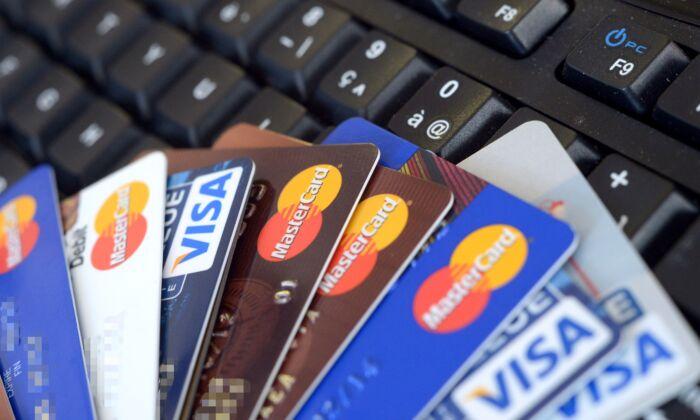When times are tough, credit card debt may be inevitable if you’re learning to manage credit or are forced to make risky financial decisions due to hardships.
For Lydia Senn and her husband, who are Alabama residents, this was their reality during the Great Recession in 2008 after she lost her job and he took a pay cut. They relied on credit cards to get by and accumulated around $14,000 in debt.
“We got our debt paid off in 2014 and we decided to just do a no-credit card lifestyle up until 2019,” says Senn, who documents her financial journey on her YouTube channel. “We don’t want to rack up high interest debt, so we’re very strategic and intentional with how we use our credit card.”
1. Don’t Keep Spending as Usual
Change your budget if inflation or other circumstances are jeopardizing it. With today’s inflation, Senn adjusted her budget to include the growing charges of gas, and internet and cell phone bills on her credit card.“Look at the budget and take a hard look at those needs versus wants,” says Katie Bossler, quality assurance specialist at GreenPath, a nonprofit credit counseling agency.
Senn’s grocery bill went from $125 per week for a family of six to $225. Trimming this bill isn’t an option since her husband has lupus and requires an autoimmune protocol diet. “It’s the difference between him thriving and being in daily pain,” says Senn.
To balance rising costs, she scaled back in other areas and opted for alternatives. Weekly family dates at the local coffee shop moved to her patio. The family now dines out and travels less, and the kids are attending a less expensive arts camp.
2. Avoid Relying on Your Credit Limit
Trimming your budget may offer opportunities to save that prevent you from relying on credit cards. Save what you can—even just $5 per week. An emergency fund is foolproof, but a credit limit can eventually max out or get slashed at the issuer’s discretion.3. Don’t Carry a Balance on a High-interest Credit Card
Carrying a large balance on a high-interest credit card makes purchases more expensive. For credit card accounts assessed interest in 2021, the average rate was 16.45 percent, according to Federal Reserve data. Some credit card interest rates run even higher at 29.99 percent.While a card’s interest rate depends on economic factors and your credit, some cards or institutions offer lower rates that may save money on ongoing balances. For instance, the national average rate on credit cards at credit unions was 11.21 percent in March 2022, according to data from the National Credit Union Administration.
4. Stop Racking Up Late Fees
If you foresee a late payment, contact your credit card issuer quickly. A late fee can cost up to $30 the first time and up to $41 after, according to a 2022 news release by the Consumer Financial Protection Bureau.5. Think Twice About Cash Advances
A credit card cash advance conveniently provides a short-term cash loan at a bank or ATM, but it’s costly. The interest on the amount of cash borrowed starts accruing immediately and fees may apply.Instead, consider a personal loan or targeted offers from issuers that turn available credit on a credit card into a less pricey installment loan that puts cash in your bank account. For the latter option, there’s no loan application or credit check required.






